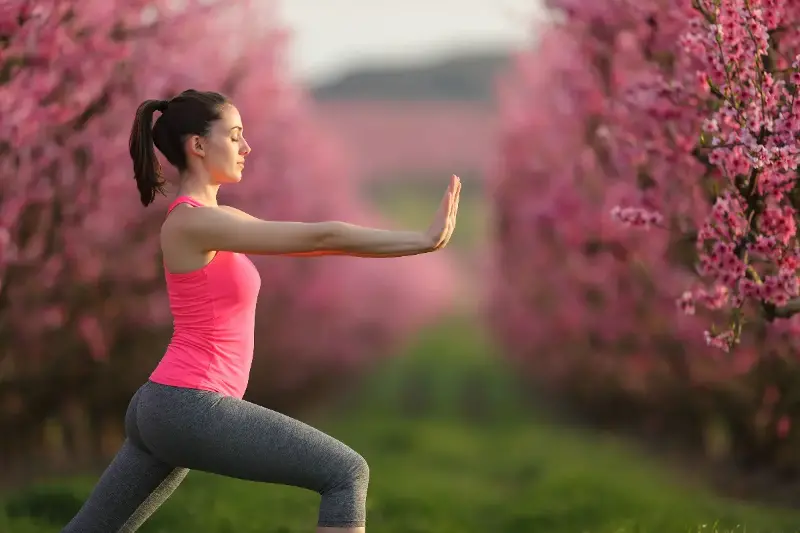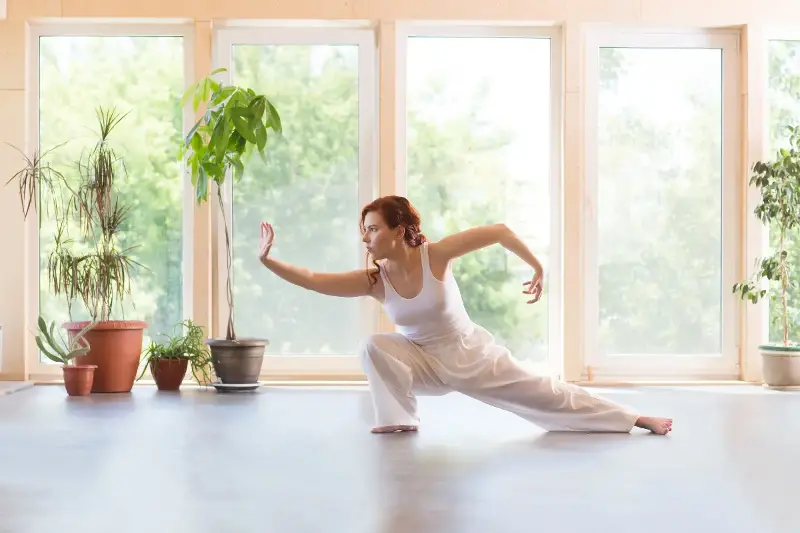In parks across the world, at dawn or dusk, you may have glimpsed a group of people moving in slow motion—arms circling, bodies gliding, hands like gentle rivers. This ancient Chinese art, Tai Chi, has long captivated observers with its silent strength and grace. But beyond its mesmerising aesthetic lies a deeper wisdom. Tai Chi, through its principle of “flow over force”, teaches us not only how to move our bodies, but how to move through our lives—with flexibility, balance, and an everyday resilience that’s quietly transformative.

The Secret Language of Movement
At first glance, Tai Chi’s movements might seem deceptively simple. Each form follows a continuous, unbroken flow, like silk pulled from a cocoon. But with each slow, mindful transition, Tai Chi practitioners learn to yield rather than resist, gently deflecting imagined force instead of meeting it head on. This is not just a physical exercise, but a philosophy in motion—embracing softness to overcome hardness, water shaping stone through patience and persistence.
Scientific studies now back what masters have known for centuries: These deliberate movements enhance body awareness and flexibility, vital for healthy joints and muscles at any age. It is, at its core, a dialogue between body and mind—a conversation in which tension melts, replaced by steady, intentional movement.

Balance: More Than Physical Steadiness
When Westerners think of balance, most imagine standing on one leg or walking a tightrope. But in Tai Chi, balance means something deeper—a dynamic harmony between opposing forces. The principles of yin and yang—the dark and the light, the soft and the strong—are woven into every gesture. Balancing weight from foot to foot, dropping the hips, and coordinating breath with intention, practitioners build not only poise but also confidence and calm.
This inner equilibrium has tangible results:
- Reduced risk of falls, especially in older adults
- Improved concentration and spatial awareness
- A calmer, more centred emotional state
It’s as much about finding peace amidst chaos, as it is about holding your ground on a busy street or uneven terrain.

Flexible in Body, Adaptable in Life
Flexibility in Tai Chi isn’t just the suppleness of limbs, but the adaptability of the mind. The best practitioners are those who learn to adjust, responding to challenges fluidly, without rigid resistance. This approach spills over into everyday situations. Whether it’s navigating a fraught meeting, coping with unexpected change, or listening more deeply in personal relationships, Tai Chi’s teachings inspire:
- Pausing before reacting—assessing the “energy” of a moment
- Adjusting direction instead of pushing through obstacles
- Embracing setbacks as opportunities to adapt and grow
“Be like water,” the old masters say. In the act of yielding, we find our greatest strength.
Building Resilience, One Breath at a Time
In our fast-paced, competitive world, resilience is often glorified as sheer toughness—a forceful powering through adversity. Tai Chi offers a softer, more sustainable model. Every inhale and exhale, every flowing posture, cultivates a nervous system that can weather stress and recover from setback. This gentler type of resilience is rooted in self-care, mindfulness, and consistency.
Those who practise regularly report lower anxiety, deeper sleep, and a greater sense of well-being. Medical research indicates Tai Chi might even help the body recover from injury, or manage chronic conditions like arthritis and fibromyalgia, all through the transformative act of mindful movement.
There’s a quiet revolution in letting go of brute force—and instead, choosing to flow through life’s currents with grace.
As you reflect on the ancient rhythms of Tai Chi, imagine what it would feel like to let go of force and, instead, to trust in flow. What doors might open if you met today’s challenges with patience and flexibility, rather than resistance? The next time you see those slow, deliberate movements under morning light, perhaps you’ll be inspired to join in—and discover where the path of gentle resilience may lead you.
